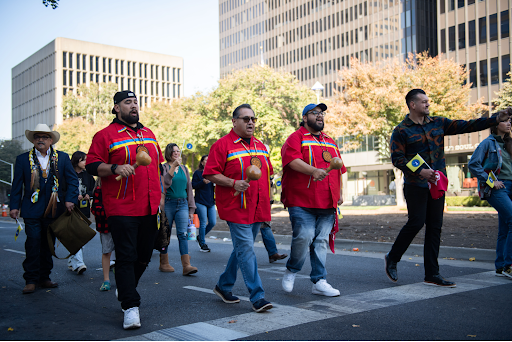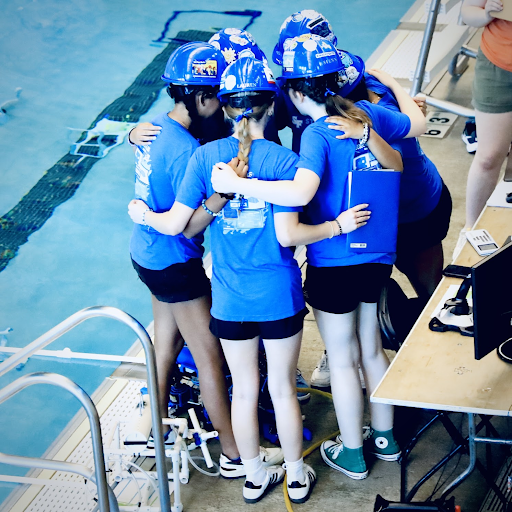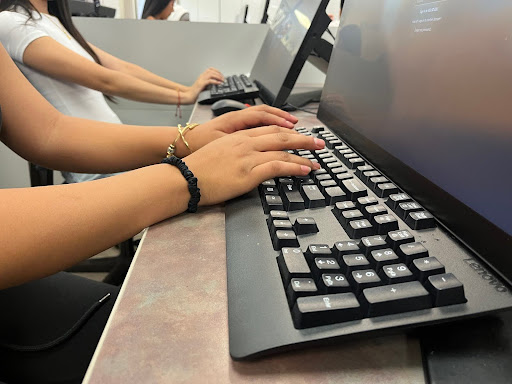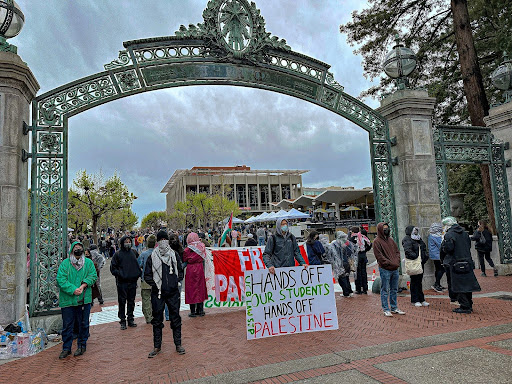California assembly member James C. Ramos is joined by others at the 2024 Inaugural National Native American Heritage Month Parade. (Photo courtesy of the office of Assemblymember James C. Ramos)
Ask any California elementary school graduate about what they did in fourth grade, and they will probably tell you about the mission project, where each student researches and presents one of California’s 21 missions that were established during Spanish colonization.
The mission project is so ingrained in California culture that some companies now sell pre-made mission craft kits to help students build models for their projects.
But these projects often overlook the mistreatment of California’s First Peoples during the Spanish colonization, and for Native American students, they represent how their history is often buried, ignored, and unseen within the California education system.
“When I was a student, Father (Junipero) Serra was the hero of California and building a mission out of sugar cubes was the thing every kid had to do,” said Dr. Stacey Schwartz, third grade social studies teacher at Brookfield School in Sacramento. “But when it was my turn to teach this, I really wanted to think about it more. I started reading more and realized there’s a whole movement in California where teachers have said: we’ve got to ban the mission models.”
Schwartz, who has a background in psychology and a commitment to inclusive education, said she teaches social studies from a human-centered point of view. Rather than focusing on dates and moments, she introduces history to her students through literature and empathy, with the goal of helping students connect to the characters they read about. It is this approach to education that helped guide her decision to end the mission project at Brookfield this year.
“I watched videos of Native Americans saying that when they see these models, it makes them want to cry because it feels like a glorification of their pain,” Schwartz added. “As a Jewish person, I thought, what if kids were asked to build concentration camps out of sugar cubes? That would be horrifying. That helped me to understand why this assignment is so deeply hurtful to others.”
Teachers like Schwartz are helping to lead a grassroots shift in how California educators present Native American history, especially in elementary schools. However, Schwartz teaches at a private school, where she may have more freedom to teach her own perspectives. In order for systemic change to occur in public schools, government policy must support and mandate these new approaches.
With support from educators like Schwartz, who are rethinking traditional assignments and engaging students with more accurate and inclusive history curriculum, California schools are beginning to change the way they teach about the state’s Indigenous peoples.
The shift away from projects that overlook the Native American experience reflects a broader effort to provide students with a more complete understanding of California’s past, and how that past affects the world today.
Assemblymember James Ramos is the first California Native American to serve in the California State Assembly. A descendant of the Serrano/Cahuilla people, Ramos grew up on the San Manuel Indian Reservation, where he still resides today. He has a first-hand perspective of what it is like to be Native American in a California fourth-grade classroom.
“In the third and fourth grade, when we were told to do the mission project, we had mixed feelings, because we knew of the atrocities that came to our people, and ultimately we didn’t want to do it,” Ramos said. “We felt caught in between.”
When Ramos tried to share the true history of the Serrano people with students and teachers at school, he was dismissed: “I would go back to school and want to tell that story, but because it wasn’t generally accepted, I would be frowned upon. The teaching of our culture was never really moved forward. The battles of 1866 never moved forward, even though we were taught about it on the reservation through our cultural awareness programs.”
This is a phenomenon that Native American students still experience to this day when what they are taught in school does not line up with their ancestors’ experience with history. Evealina Carrasco, a sophomore at St. Francis High School, felt pushed aside when she tried to share her story with elementary school peers.
“When teachers and textbooks told me this stuff that wasn’t true,” Carrasco said. “I was so confused. I remember I tried to tell my friends about it, but they just said that the history book is always right.”
California Assembly Bill 1821 is a significant move toward changing the educational narrative about Native Americans. Written by Ramos, the bill aims to change the way that California schools teach the history of the California indigenous peoples. The bill mandates that schools teach about the impact of Spanish colonization and the Gold Rush on Native Americans in collaboration with local tribes, addressing long-standing gaps in the state’s educational curriculum.
The legislation was approved last fall and signed into law by Governor Gavin Newsom. It took effect on Jan. 1.
“So wherever your school or any school in the state of California is at, that’s an ancestral territory of a California Indian tribe, and we should learn from the people themselves about their history, not just the atrocities that happened, but the contributions,” Ramos said. “Like in our area and other places in the state, a lot of the highways were once Indian trails that are now paved over as major roadways.”
Assembly Bill 1821 was actually the second of two bills that Ramos has introduced to the California legislature. In 2022, the California Indian Education Act was passed, which only encouraged schools to teach about these significant periods in the history of California’s First Peoples.
“When I first moved forward on a piece of legislation that called for exactly what AB 1821 calls for, the bill didn’t even get a hearing,” Ramos said. “So I reintroduced the bill in 2022, but I had to water down the language to the word ‘encourage’ instead of ‘shall.’ Now, with AB 1821, the language has more strength to ensure this education starts to move forward in the state of California.”
Carrasco said she believes Ramos’ bill is crucial to raise awareness about the history of California’s first peoples.
“It helps future generations, it helps everyone,” she said. “I know there are people today that don’t understand that genocide really happened and they have just moved on. And I really do think that this is something that needs to be talked about.”
Carrasco also emphasized the importance of embracing all people, but especially those of indigenous heritage and reaching out to local tribes.
“Find other people who are of your heritage,” she said. “Also, just be proud of who you are. It’s an amazing thing that we have, and it’s hard that the world doesn’t see our complete history. But the more you learn, the more you can really connect with other indigenous people.”
For Ramos, the California Indian Education Act and Assembly Bill 1821 are just the start. His next goal is to return the remains of Native Americans that are currently owned by the California State University system to the tribes of California. And although he is proud to be the first to represent his people in the California State Assembly, he knows that his work is never done.
“There’ll be time to look back, maybe at a future date,” he said. “But now we’re going to work as hard as we can.”









